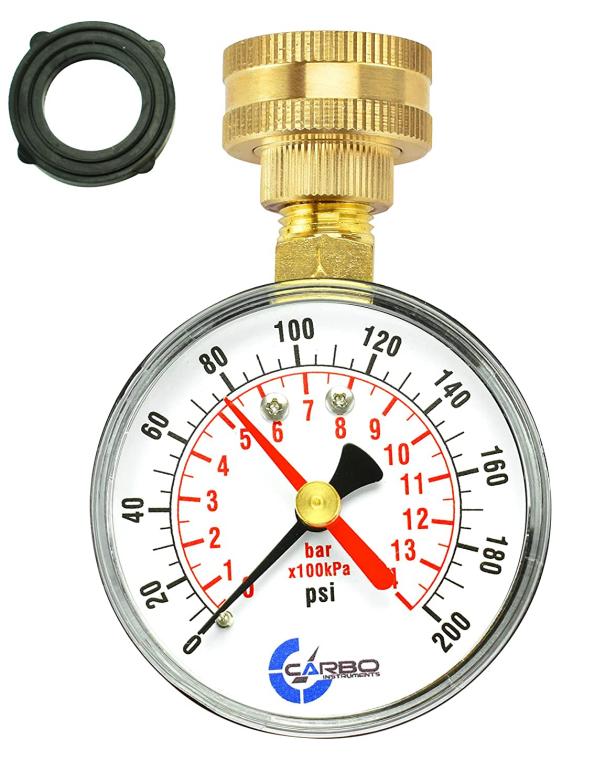Clear Approaches for Fixing Low Water Pressure in Your Home
Clear Approaches for Fixing Low Water Pressure in Your Home
Blog Article
Everybody has got their personal opinion with regards to 10 Reasons for Low Water Pressure in Your House.

Low water pressure in your home can be a discouraging trouble, influencing every little thing from bathing to washing recipes. If you're experiencing weak water flow, there are a number of possible reasons and remedies to discover. In this overview, we'll talk about common factors for low tide pressure and sensible actions to resolve the problem effectively.
Intro to Low Tide Pressure
Low tide pressure happens when the flow of water from your faucets, showers, and other fixtures is weak than typical. This can make everyday tasks more challenging and less reliable. Understanding the causes of low tide pressure is important to locating the best solution.
Common Sources Of Low Water Pressure
Faulty Stress Regulatory Authorities
Stress regulators are accountable for keeping constant water pressure in your house. If they malfunction, it can cause low tide stress or unequal circulation throughout the house.
Community Water System Issues
Sometimes, the problem lies outside your home. Local water system problems, such as main line leakages or maintenance job, can briefly reduce water pressure in your area.
Pipe Obstructions
With time, pipelines can come to be obstructed with mineral deposits, sediment, or particles, limiting the flow of water. This is a typical issue in older homes with galvanized steel pipes.
Corrosion
Rust within pipelines can cause leakages and decreased water stress. Rust buildup can constrict water circulation, especially in aging plumbing systems.
Just How to Diagnose Low Tide Pressure
Evaluating Pipes
Check noticeable pipes for indicators of leakages, corrosion, or obstructions. Focus on any kind of unusual sounds, such as banging or rattling pipes, which can suggest concerns within the plumbing system.
Consulting with a Plumber
If you're not able to identify the cause of low water stress, take into consideration working with an expert plumber to perform a comprehensive assessment. They can identify underlying issues and advise suitable options.
Examining Taps and Fixtures
Start by evaluating the water pressure at various faucets and components throughout your home. If the concern is isolated to specific areas, it may indicate local issues.
DIY Solutions to Fix Low Water Stress
Flushing Water Heater
Debris accumulation in the hot water heater can limit flow and minimize efficiency. Purging the storage tank periodically aids eliminate debris and keep optimal performance.
Inspecting Pressure Regulator
Ensure that the pressure regulatory authority is functioning properly. Changing or replacing the regulator can help restore proper water stress throughout your home.
Cleaning Up Aerators and Showerheads
Mineral deposits can collect in aerators and showerheads, lowering water flow. Eliminate and clean these components on a regular basis to boost water stress.
Clearing Clogs in Piping
For minor clogs, try making use of a plumbing serpent or chemical drainpipe cleaner to clear obstructions in pipelines. Beware when utilizing chemicals and adhere to security standards.
When to Call a Specialist Plumber
If DIY initiatives fail to deal with the issue or if you presume significant plumbing problems, it's finest to seek help from a licensed plumber. They have the proficiency and devices to resolve complicated issues securely and efficiently.
Preventive Measures to Maintain Water Stress
Mounting a Stress Booster
Take into consideration setting up a stress booster pump to improve water stress in locations with constantly low circulation. This can be particularly advantageous for multi-story homes or properties with high-demand fixtures.
Tracking Water Use
Bear in mind water usage practices and stay clear of ill-using the plumbing system. Simple modifications, such as shocking showers and washing lots, can help preserve sufficient water pressure.
Routine Maintenance
Arrange regular upkeep for your plumbing system to prevent concerns such as corrosion, leakages, and blockages. Addressing minor issues early can assist prevent more considerable repair services later.
Conclusion
Taking care of low water pressure can be irritating, however identifying the underlying causes and applying ideal options can recover optimal flow throughout your home. Whether it's cleaning aerators, evaluating pipes, or consulting with a plumber, taking aggressive steps can guarantee a stable supply of water for your day-to-day requirements.
FOUR WAYS TO FIX LOW WATER PRESSURE NOW
Turning on a shower or faucet only to find the water comes out in a sad, slow drizzle is never a good feeling. How exactly are you supposed to wash a pan or take a quick shower when it takes 10 minutes just to rinse off a little soap? The good news is that when your water pressure is bad, there's always a cause: typically one that can be easily fixed. Here are some of the most common causes of low pressure and what you can do to fix the issue:
DEBRIS AND MINERAL DEPOSIT BUILDUPS
If you notice low water pressure from just one or two of the fixtures in your house, the problem likely has to do with debris buildup. Water is full of minerals and other debris, all of which can accumulate in your pipes and on your fixtures. This can cause a blockage that affects how much water flows through. To fix this, try filling a small plastic bag with white vinegar, and use a rubber band to hang it around your showerhead or faucet. Let the head of the fixture soak for a few hours, and the vinegar should loosen the deposits.
WATER LEAKS
Leaks are another common cause of low water pressure. If water is flowing out of your plumbing through a hole or crack before it can reach your fixture, the pressure coming out of the faucet or showerhead will be lower. A plumbing professional is your best bet for finding and repairing a leak in your water supply pipes.
Leaks are another common cause of low water pressure. If water is flowing out of your plumbing through a hole or crack before it can reach your fixture, the pressure coming out of the faucet or showerhead will be lower. A plumbing professional is your best bet for finding and repairing a leak in your water supply pipes.
A VALVE ISSUE
If you have low water pressure throughout your home, check your main shut-off valve to make sure it's completely open. You may also want to see if there's a pressure-reducing valve installed. If there is, have a plumber help you adjust the settings to get the pressure you're looking for.
OTHERS USING WATER
Believe it or not, your low water pressure could be caused by your neighbors. If you notice low pressure at certain times of day, it may be because you and the people living next to you have similar schedules - when everyone is showering at the same time, the pressure will be lower in every home. Low pressure throughout the neighborhood may also be caused by an issue with your municipal water supply. If that's the case, call the supplier to see if they're working on the issue.
https://www.rotorooter.com/blog/water-leaking/low-water-pressure-fixes/

As a keen person who reads on , I think sharing that excerpt was essential. Enjoyed reading our posting? Please quickly share it. Let someone else find it. I recognize the value of your readership.
Get Quote Report this page